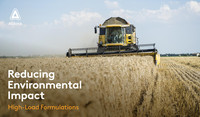
A simple yarn about cotton

The cotton itself is a light, cellulose fibre produced in bolls, or seed cases, and was an evolution by the plant to help disperse seed on the wind. Over time plant breeders have developed cultivars that maximize the cotton fibre yield and this is harvested as a lint and then spun into yarn for manufacture.
Growing conditions
Temperature
The cotton plant is grown in the warm, moist climates of tropical or sub-tropical regions. It takes between 150 and 180 days from germination to harvest but this time-period depends on varietal differences and fluctuations in the weather. The crop requires substantial heat with the optimum temperature for germination between 18°c to 30°c, but in conditions below this, the dormant seed is vulnerable to soil-borne fungal infections including Fusarium species.
For successful budding at 50-85 days post-planting and flower formation at 75 to 115 days into the season, the temperature needs to exceed 20°c and to remain above 12c at night. Even higher temperatures are required to promote boll formation with the ideal at 27°c to 32°c. However, in extreme heat (+40c) the plant can suffer through moisture loss and yields will decline. An additional weather risk to both yield and crop quality is from strong winds at boll maturation. The lightweight cellulose fibre that breeders and growers have exploited so successfully are, nonetheless, extremely susceptible to being blown away and lost or being spoiled by dust and dirt kicked up by the wind.
Moisture
Although variety choice confers the most significant differences in boll and fibre properties, irrigation also influences lint to seed ratio and the length, strength and fineness of the lint produced.
Where there is a lack of moisture there may be reduced yields caused by boll losses while quality may suffer as the plant tends to produce finer, weaker fibre.
According to Cotton Australia the drought which hit the country in 2007/08 saw national annual production plummet to 600,000 bales from highs of around 3 million bales per year in previous harvests. As well as overall yield, severe water deficits also limit the amount of oil produced in the seed. Normally, cotton seed contains 35% oil and 35% protein, but this can fall by 20% in areas where rainfall or irrigation are insufficient.
The crucial timing for adequate water supply is at sowing for germination and establishment and immediately ahead of, and during, bud formation which then influences final yield. However, too much water at other times, for example early in the growing period, will restrict root development and can cause excessive vegetative growth which may limit maturation and hence yields.
Crop Production
Harvest
Harvest follows the application of a defoliant which stops the plant growth. Most cotton in the USA, Australia and Europe is then removed from the plant using a mechanical picker that leaves the plant intact or a stripper which removes the entire boll. In some countries where the degree of mechanization is lower the crop is still picked by hand.
The crop as it is removed from the field is known as unginned cotton and contains impurities like plant material and seeds. Estimates suggest unginned cotton contains 32-33% cotton fibres, 52-54% cottonseed and 15% impurities. The crop cannot be sold until these impurities have been separated and removed in an operation carried out by a mechanical cotton ‘ginner’.
Yield
A good harvest of a 160- to 180-day cotton crop, under irrigation, is roughly between four to five tonnes/ha including both cottonseed and lint. However, cotton crop yields vary hugely from region to region due to soil condition, management and irrigation levels. They also vary from year to year according to rainfall, temperature and disease.
Figures calculated by the United States Department of Agriculture for the 2015/16 season showed that even among the world’s top 10 cotton producing nations, yields per hectare varied widely. Cotton lint production in India was just 458kg/ha while China produced more than three times that rate at 1,570kg/ha. Likewise, cottonseed yield followed the same ratio in the two countries with India producing 890kg/ha and China 2,820kg/ha.
Global output
The world’s largest producers are China and India, according to official figures published by the United Nations Food and Agriculture Organisation for the 2014 crop. India was slightly ahead in lint production at 618 million tonnes compared to China’s 617 million tonnes. However, the top two rankings were reversed for cottonseed production with China producing 12.32 million tonnes against India’s 12.30 million tonnes.



